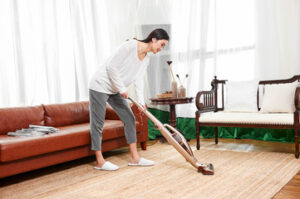Whether you’re a homeowner or considering a career in the field, having an understanding of HVAC Round Rock can be invaluable. The right system can improve comfort and efficiency while saving energy.

Performing routine maintenance can also help extend its life span. It can identify issues and address them before they become major problems, lowering operating costs.
HVAC systems regulate air temperature, humidity, and quality within buildings. They’re essential in residential structures like single-family homes and apartments, as well as large commercial ones like schools, malls, hospitals, and skyscrapers.
There are many different kinds of HVAC systems, but most of them work in similar ways. The basic function is to move heat from one area to another, cooling in the summer and heating in the winter. The specifics vary by unit type, but most consist of an indoor component (which houses the evaporator coil and blower) connected to an outdoor component that contains the compressor and condenser coil.
The evaporator coil absorbs heat from the air as it blows across it, and the blower then pushes that heat into the ducts of the building. The system also has an exhaust, which vents the heated air outside. The condenser absorbs the heat from the air and turns it back into a liquid, which is then pumped into the compressor. The process repeats itself until the air is cool enough to be comfortable.
Modern HVAC systems are often based on renewable energy sources like solar and ground-source heat pumps, which can be integrated into smart home installations. These new technologies can reduce energy consumption and create a greener environment.
If you notice that your existing system is struggling to keep up with heating and cooling needs, or if your bills are increasing, it may be time to replace it. This will ensure that your house is always warm or cool, with a consistent and comfortable atmosphere.
The most obvious benefit of HVAC systems is their ability to maintain stable indoor temperatures. However, they also do a lot more. They provide ventilation by circulating fresh air throughout a building, which helps remove stale and musty odors and reduces the risk of mold and mildew buildup. They can also improve the indoor air quality by filtering out harmful airborne pollutants, reducing respiratory problems and other health issues. They can even control the levels of moisture in the air, which is vital for keeping a healthy and comfortable climate.
Cooling
For most people, HVAC is synonymous with air conditioning. But this acronym stands for heating, ventilation and air conditioning, and it encompasses much more than just cooling. The system works as a unified whole to control temperature, air quality, and humidity. Understanding the different components of HVAC and how they work together will help you get more out of your home heating and cooling systems.
Cooling is achieved by reducing the temperature of air through heat exchange. As the air moves over the cooling tower, the refrigerant absorbs some of the heat and carries it away through convection or radiation. The cooled air is then blown out through ductwork into the space, lowering the ambient temperature.
Many types of heating and cooling units are used in residential settings, including furnaces, heat pumps, and central AC systems. The best HVAC system for your house depends on local climate conditions, such as average temperatures and humidity levels. Your HVAC professional will assess your needs and recommend the best type of system to meet them.
Air filtration is also a crucial part of any HVAC system. HEPA filters trap harmful pollutants, such as dust, pollen, and pet dander. These systems can also regulate air moisture, preventing excess condensation that could lead to mold and structural damage.
The ductwork in your home is essential to the proper functioning of your HVAC system. Your technician will ensure the ducts are properly sized and installed, with high-efficiency insulation to reduce energy costs. They will also check that the ductwork is sealed tightly to prevent air leakage and infiltration.
Larger HVAC systems also use cooling towers to lower the temperature of the water that circulates throughout a building. Industrial equipment like air conditioners generate a lot of heat, and this heat must be dissipated to maintain an ideal operating environment. The cooling tower takes the hot water from the piping and exposes it to air, evaporating some of the water and cooling it.
The piping in an HVAC system is typically made from galvanized steel or copper. It is then insulated and wrapped in fiberglass to protect the piping from heat loss. Some piping is prefabricated in the factory, but most is field-erected on-site. The piping is connected by valves, such as ball valves that are highly durable and can handle high pressure and temperature. The valves are often pneumatically operated, but some are electric or electromechanical.
Ventilation
The second of the four “H’s” in HVAC is ventilation, which provides an essential part of your heating and cooling system. Ventilation systems work by bringing in fresh air from the outdoors, circulating it throughout your home, and then expelling out the stale air that’s already inside. This process is critical for maintaining good Indoor Air Quality (IAQ), as it helps to dilute metabolic pollutants like carbon dioxide and odour, and it’s especially useful in helping to reduce humidity.
The ventilation component of your HVAC system works in conjunction with ductwork, which is a network of channels that distributes conditioned air throughout your home or building. The ductwork is fitted with air filters, which help to remove dust, dirt, allergens, and other debris from the circulating air, improving your home’s indoor air quality.
When you turn on your AC, the ventilation system draws in air from outside, and it passes through a filter before being forced over an evaporator coil. The refrigerant in the coil vaporizes, and as it does so, it absorbs heat from the air that’s being blown over the coil. After the air is sufficiently cooled, it’s pushed out through return ducts and out into your home or building.
Ventilation also allows your system to control the movement of air or draught, which is another important aspect of heating and cooling. When you want to create a draught, you can simply open a window or door and let the natural air in.
A properly functioning ventilation system can control temperature, humidity, oxygen levels, airborne bacteria and viruses, smoke, and carbon dioxide. It’s a crucial component of any home or building.
Whether you’re interested in learning more about the world of HVAC, looking into a career in it, or simply improving your home system, an understanding of how it works is incredibly beneficial. The more you know about your HVAC system, the more comfortable and energy-efficient your home will be. Contact us today if you have any questions about the different components of an HVAC system, or if you’re interested in learning more about our services.
Maintenance
A properly functioning HVAC system creates internal environments that meet occupant requirements. This is a critical component of any property’s operation and should be protected with a comprehensive maintenance plan. A regular maintenance schedule not only reduces the likelihood of a failure, but also saves money by preventing problems from worsening.
A professional commercial HVAC maintenance check typically includes air filters, cleaning vents and ductwork, and inspecting blower motors and other mechanical components to determine whether they need lubrication or replacement. It may also include calibrating the thermostat and checking refrigerant levels, which helps to ensure that the system operates efficiently and accurately.
It is important for building occupants to pay attention to odd noises and smells from the HVAC system. These could indicate a serious problem that needs professional attention immediately. A squeaky fan or an unusually pungent smell are good reasons to call in a technician as soon as possible.
Other signs that a problem may be developing are dripping water from the air conditioner or furnace. If left unchecked, this can damage a variety of components including electrical ones, resulting in expensive repairs and replacements. A clogged drain line should be addressed promptly as well. A clogged drain can result in water damage and a host of other issues.
The simplest way to keep on top of an HVAC maintenance program is to make it a part of your PM checklist. This can be done with the use of a CMMS solution such as i4T Maintenance, which allows you to track and manage the entire maintenance schedule. This makes it easy for you to identify any potential issues and get them resolved before they turn into major breakdowns, which can be costly. The key to this is planning ahead, not just in terms of what needs to be done but how it will be scheduled and by whom. This is the best way to keep on top of your maintenance program and prevent any issues from slipping through the cracks.




